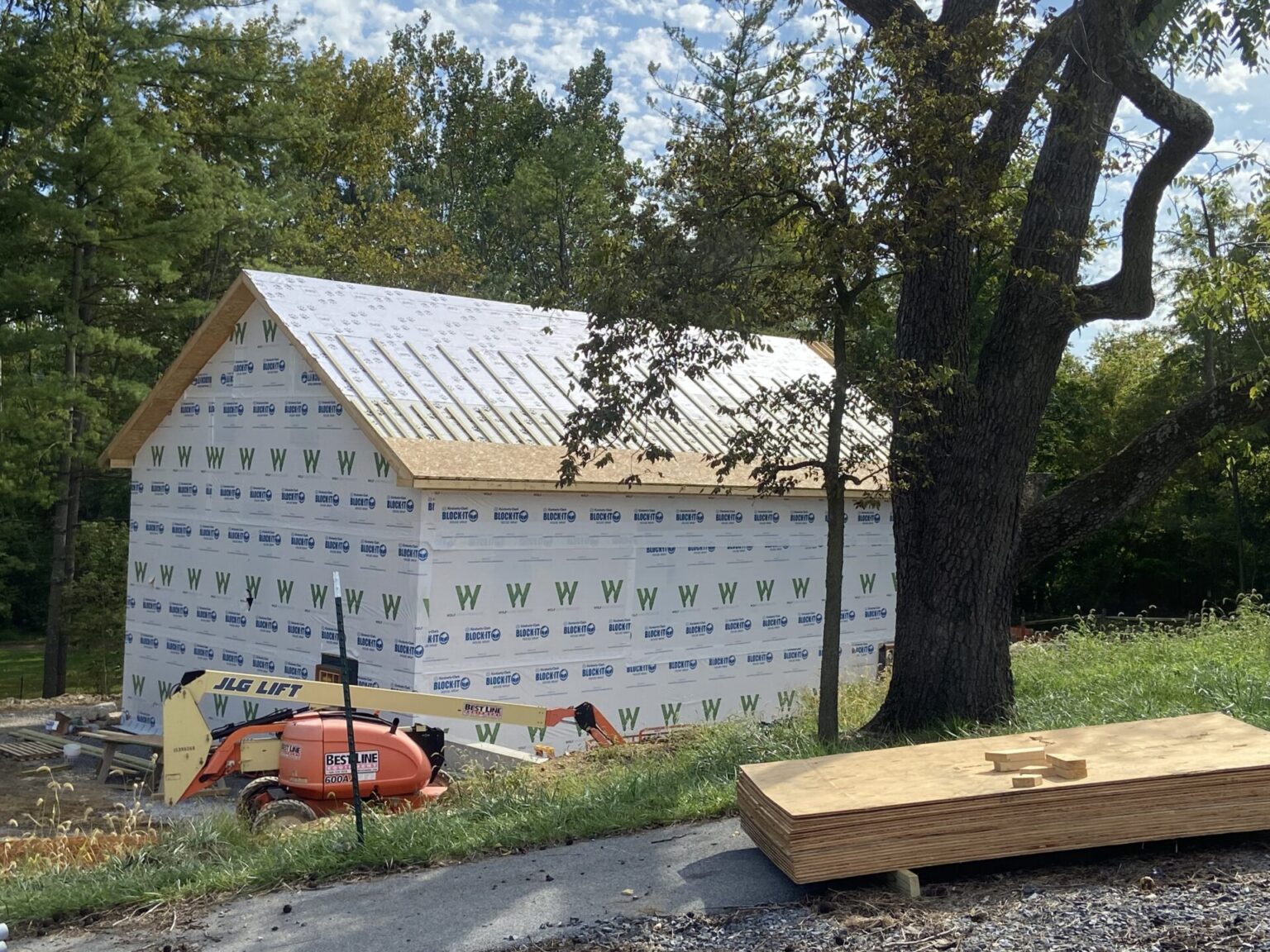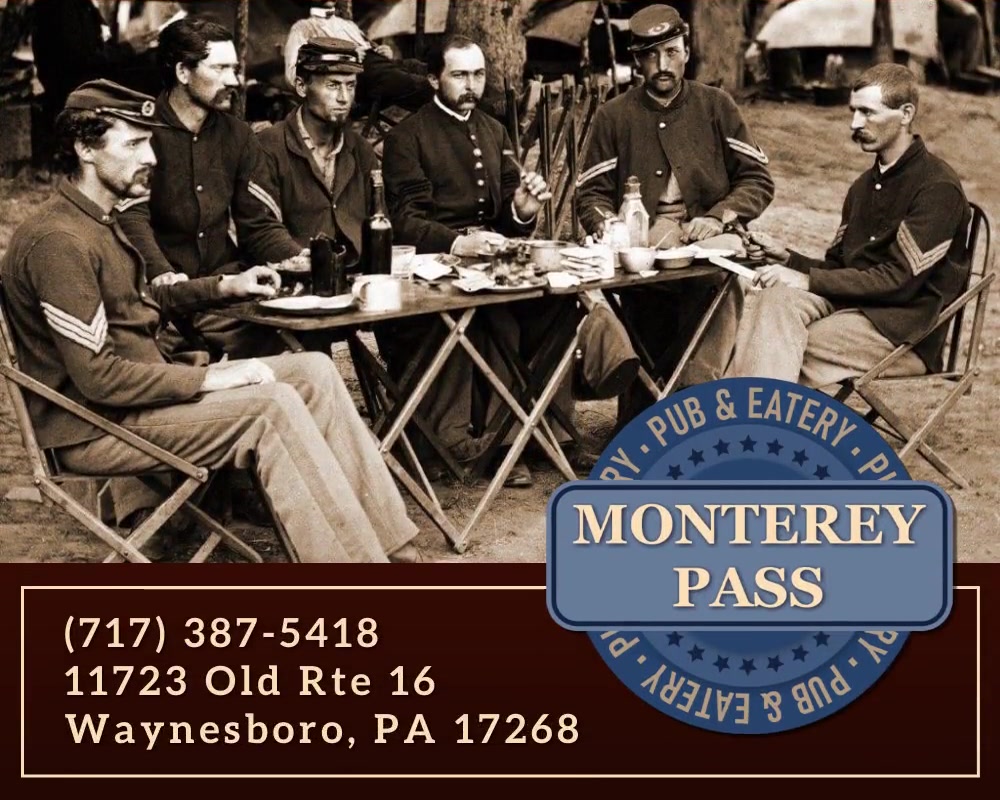A missing feature of Renfrew’s historic landscape is taking shape.
Work on the gristmill, to be located north of the ruins of the Royer Mill, includes the installation of all four bays “and the mill’s outline is now representative of its true size and shape on the landscape,” according to Becky LaBarre, executive director and CEO at Renfrew Museum and Park in Waynesboro.
Phase I construction (mill building and restroom/pumphouse structures) is to be completed in the early months of 2024. “Besides the buildings themselves, additional site work is needed such as finish grading, landscaping, construction of an accessible pathway to the mill, etc. is also needed to prepare the new feature for safe entry by our visitors,” she added.
“Visitors can really get a sense of the relatively diminutive scale of the original 1807 Royer Mill building compared to nearby mills constructed later in the 19th century,” LaBarre said.
The three-story structure with fully functioning millworks will be driven by a single waterwheel. “It will be a representation of the historic Royer Mill, but not an exact reproduction, so for safety and code compliance modern materials are being used,” she added.
GRC General Contracting Inc. of Zullinger broke ground for the project April 15. “Now the timber-framed mill building is fully constructed and enclosed in plywood and vapor wrap. Masonry work, true random course limestone veneer on the lower third, started this month. The masons have taken special care to design the coursing and mortar joints in the style of our historic 19th century stone buildings,” LaBarre noted.
“Window installation is happening now and the roof shingles have been delivered. Roofing is slated to begin in the next week or two,” she said. “The foundation work for our ancillary restroom/pump house building is also complete with framing anticipated in mid-October followed by the start of interior work, mechanical, electrical, and plumbing toward the end of the month.
“Visitors have really enjoyed watching the construction and are eagerly anticipating the completion of the mill. Many folks are surprised to hear that, in order to protect archeological and environmental resources, the Renfrew Mill won’t have a headrace or mill pond like it did historically, but instead be supplied by recirculated water. The effect will be the same, with an impressive custom-built Fitz style water wheel mounted to the western elevation turning and operating the interior millworks,” LaBarre said.
History of the project
The Royer gristmill, a three-story structure built by Pennsylvania German tanner Daniel Royer in 1807 of stone, brick, and wood, was originally located at the southern end of the farmstead on the west bank of Little Antietam Creek. It operated as a mill until the 1870s when Royer’s grandson, A.J. Fahnestock, tried unsuccessfully to turn the building into a creamery when many area farms were making the switch to commercial dairy production. Razed by the subsequent owner, Dr. Abraham Strickler, in the early 20th century, the old mill is now a stone ruin, measuring approximately 50 feet by 50 feet.
Two 14-foot overshot wheels powered two sets of grindstones: one set for milling grain and one set for inedible industrial materials, such as tanbark and lime, used in the leather tanning process. A milldam, near the footbridge to the Royer house at the northern end of the farmstead, diverted water into a 1,200 foot long headrace. The water dropped from the millrace onto the overwheels providing the force to turn the gears that operated the millstones. After passing over the wheels, the water was channeled back into the creek through a 1,000 foot long tailrace.
The project was originally estimated at $2.2 million, but post-Covid material and labor costs have raised the project to nearly $5 million, LaBarre said. “Thanks to the incredible generosity of James Luty and the RACP (Redevelopment Capital Assistance Program) grant we received from the Pennsylvania Office of the Budget, we’re nearly there.”
Renfrew will kick off a capital campaign in January 2024 to raise the $1.5 million in remaining funds needed to finish the project – constructing custom millworks and installing the recirculating pump, according to LaBarre. “Those working, moving parts are the final elements needed to resurrect this critical missing piece of Renfrew’s industrial heritage so it can be fully understood by our visitors. Completing Phase II will allow us to at last interpret the mill’s significance, sharing the full story of Renfrew Museum and Park with visitors of all ages encouraging them to ‘Cultivate Inspiration.’”
LaBarre encouraged residents to watch Renfrew’s website, newsletter, and social media accounts for announcements related to both the ribbon cutting for Phase I and the official kick-off for the Phase II capital campaign.
About Renfrew
Renfrew’s mission statement, updated this spring, is “Renfrew Committee, Inc. supports the Borough of Waynesboro in its stewardship of Renfrew Museum and Park by preserving, interpreting, and educating others about its historic Pennsylvania German farmsteads, Early American decorative arts collection, built environment, and cultural landscapes. Creating lasting connections to Renfrew’s distinctive character and dynamic heritage through unique experiences, we foster a meaningful sense of place for visitors of all ages.”
“Our vision statement is ‘Rooted firmly in Renfrew’s past, we will cultivate inspiration for today, harvesting a shared history for tomorrow,’” LaBarre said.
For more information or to make a donation visit:






















